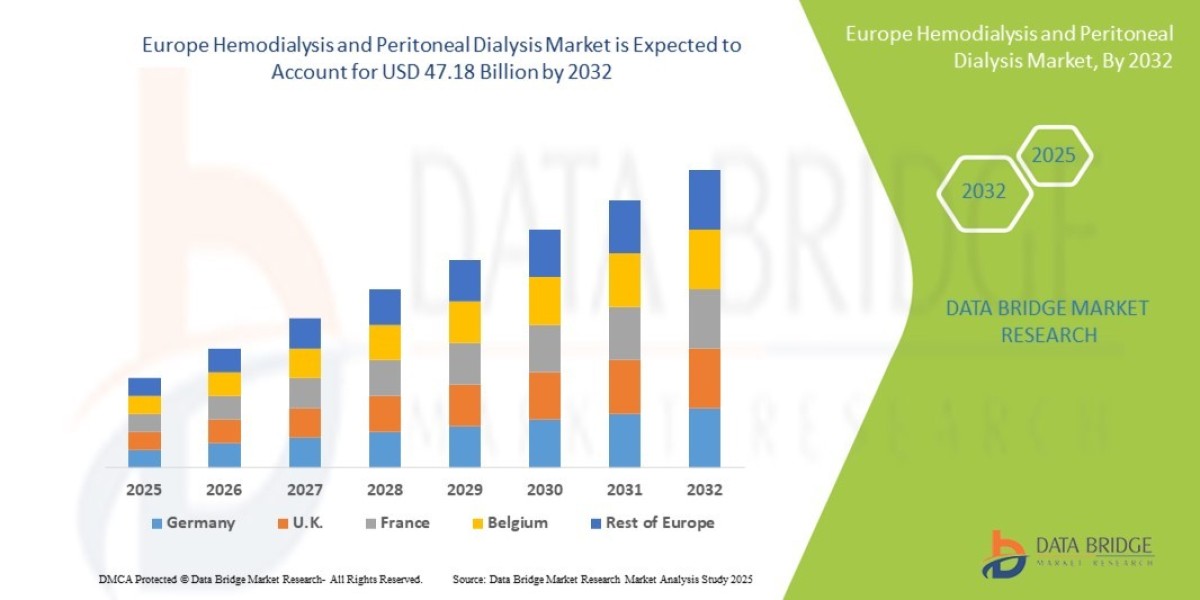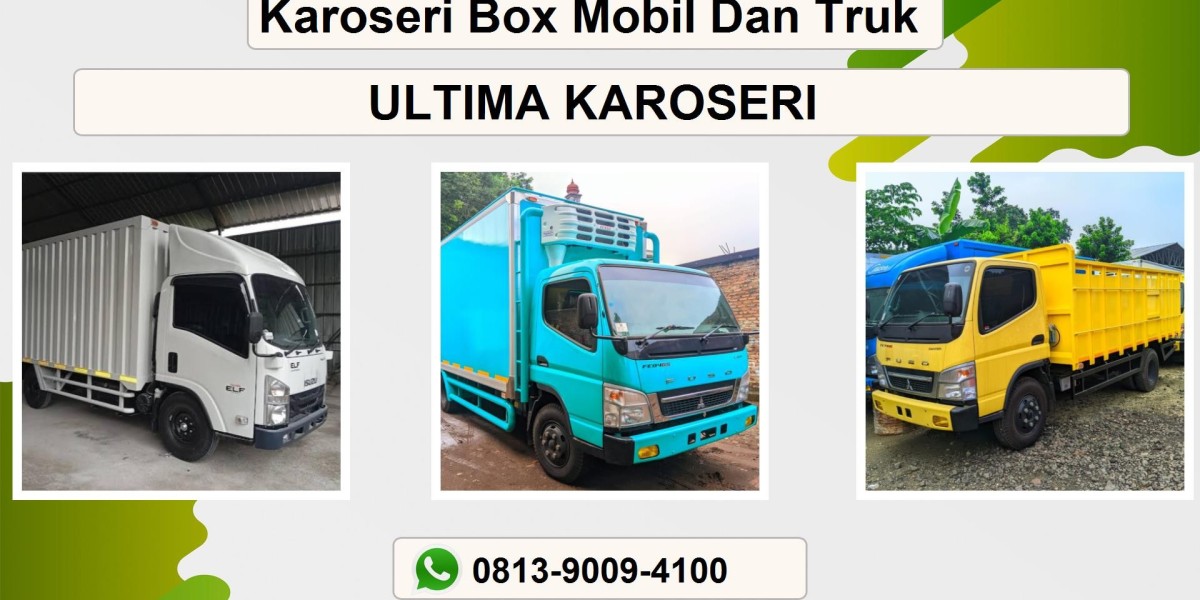Introduction
The Europe hemodialysis and peritoneal dialysis market represents a critical segment within the healthcare industry, addressing the growing burden of chronic kidney disease (CKD) and end-stage renal disease (ESRD). Dialysis, whether performed through hemodialysis or peritoneal dialysis, remains a life-sustaining therapy for millions of patients unable to undergo kidney transplantation. In Europe, where the prevalence of lifestyle-related diseases such as diabetes and hypertension continues to rise, demand for dialysis therapies is expanding rapidly.
Globally, Europe plays a pivotal role in shaping dialysis care models, supported by advanced healthcare infrastructure, government reimbursement programs, and ongoing research and innovation. The market is characterized by the presence of leading multinational corporations, regional healthcare providers, and research-driven startups that together create a competitive yet innovation-driven ecosystem.
This report explores the current state of the Europe hemodialysis and peritoneal dialysis market, offering insights into growth drivers, challenges, segmentation trends, competitive dynamics, and future opportunities. By highlighting regional specifics and emerging trends, the report serves as a comprehensive guide for stakeholders, ranging from healthcare providers and policymakers to investors and manufacturers.
Source - https://www.databridgemarketresearch.com/reports/europe-hemodialysis-and-peritoneal-dialysis-market
Market Overview
The dialysis market in Europe encompasses two primary modalities: hemodialysis, which filters blood externally through a dialyzer machine, and peritoneal dialysis, which utilizes the peritoneal membrane in the abdomen as a natural filter. Both methods serve as vital alternatives for patients with irreversible kidney damage.
Historically, hemodialysis has been the dominant modality in Europe, conducted predominantly in dialysis centers and hospitals. However, peritoneal dialysis is gaining traction due to its home-based convenience and potential to reduce healthcare costs. The European healthcare system’s emphasis on patient-centric care, combined with technological advancements, is gradually expanding the adoption of both modalities.
The current market reflects steady growth, driven by an increasing number of patients diagnosed with ESRD, improved access to dialysis facilities, and supportive reimbursement structures in many European countries. While Western Europe, particularly Germany, France, Italy, and the UK, remains a hub for advanced dialysis care, Central and Eastern European nations are witnessing rising adoption, supported by growing healthcare investments.
Market Drivers and Opportunities
Several factors contribute to the robust growth of the Europe hemodialysis and peritoneal dialysis market. A major driver is the rising prevalence of chronic kidney disease, closely linked to the increasing incidence of diabetes, obesity, and cardiovascular disorders. As life expectancy rises, the aging population further adds to the pool of patients requiring long-term dialysis care.
Healthcare policies across Europe also play a pivotal role. Many governments support dialysis treatment through insurance schemes and national health programs, ensuring affordability and accessibility. This has significantly improved patient survival rates and created opportunities for manufacturers and service providers.
Technological innovation presents another growth avenue. Advances in hemodialysis machines, wearable devices, and automated peritoneal dialysis systems are enhancing patient convenience and treatment efficacy. Remote monitoring and telemedicine integration offer opportunities for home-based dialysis, a segment with immense growth potential given Europe’s focus on decentralized and cost-efficient healthcare delivery.
Investors and businesses can also tap into opportunities in Central and Eastern Europe, where improving infrastructure and growing awareness of kidney health are creating new demand. Moreover, the increasing shift toward personalized medicine and biocompatible dialysis solutions provides fertile ground for product innovation and market differentiation.
Market Challenges and Restraints
Despite its growth prospects, the Europe dialysis market faces several challenges. High treatment costs remain a concern, particularly in regions with limited reimbursement coverage. While Western European countries provide strong financial support for dialysis patients, cost barriers persist in parts of Eastern Europe.
Another restraint is the risk of complications associated with dialysis therapies. Hemodialysis, for example, can lead to cardiovascular stress, infections, and long-term vascular access issues, while peritoneal dialysis carries risks of peritonitis and reduced efficacy over time. These clinical challenges can affect patient adherence and treatment outcomes.
Workforce shortages present an additional challenge. The demand for skilled nephrologists, dialysis nurses, and technicians often outpaces supply, especially in rural or underserved regions. This imbalance can lead to service delivery gaps and hinder patient access.
Furthermore, regulatory complexity across different European nations can create hurdles for manufacturers aiming to introduce new products or expand their operations. Compliance with stringent safety standards and varying reimbursement policies requires significant investment in time and resources.
Market Segmentation Analysis
The Europe hemodialysis and peritoneal dialysis market can be segmented by product type, modality, end-user, and region.
By product type, the market includes dialysis machines, dialyzers, catheters, fluids, and consumables. Dialysis machines and consumables represent the largest share, as they are indispensable for routine treatment. Innovative products like portable dialysis systems are gaining visibility in home-care settings.
By modality, in-center hemodialysis dominates due to established infrastructure and high patient reliance on hospital-based care. However, home-based hemodialysis and peritoneal dialysis are expanding as patients and providers recognize the benefits of convenience, reduced costs, and improved quality of life. Automated peritoneal dialysis, in particular, is witnessing growth as it simplifies treatment for patients.
By end-user, hospitals and dialysis centers account for the majority of procedures, offering specialized care and emergency support. Home-care settings, though smaller in share, are poised to grow rapidly with the introduction of telehealth and remote monitoring technologies.
From a regional perspective, Western Europe leads the market, supported by advanced healthcare systems in Germany, France, Italy, Spain, and the UK. Central and Eastern Europe are emerging as important growth areas due to improving healthcare infrastructure and rising awareness of kidney health. Scandinavian countries are notable for their high adoption of home-based dialysis therapies, driven by patient-centric healthcare policies.
Competitive Landscape
The Europe dialysis market is highly competitive, with both global giants and regional players contributing to innovation and service delivery. Leading companies include established medical device firms and pharmaceutical companies that provide dialysis equipment, consumables, and related services.
Strategies adopted by major players include mergers and acquisitions, partnerships with healthcare providers, and investments in research and development to launch next-generation dialysis systems. Collaborations with governments and hospitals are also common, aiming to expand access and integrate new technologies into existing healthcare systems.
Innovation is a key differentiator. Companies are focusing on portable and wearable dialysis devices, biocompatible membranes, and smart monitoring systems to improve patient outcomes. Sustainability initiatives, such as reducing water consumption in hemodialysis and minimizing waste, are also gaining importance in corporate strategies.
Regional players play a critical role in addressing localized needs, often offering cost-effective solutions and leveraging strong distribution networks. Together, these dynamics create a market that is both competitive and ripe for further consolidation and innovation.
Future Outlook and Trends
The future of the Europe hemodialysis and peritoneal dialysis market is expected to be shaped by technological innovation, patient-centered care, and sustainability. Over the next five to ten years, home-based dialysis is projected to grow significantly, supported by automated systems, telehealth integration, and supportive government policies.
Technological disruptions, such as wearable dialysis devices, AI-driven treatment monitoring, and regenerative medicine, hold the potential to redefine dialysis care. While kidney transplantation remains the gold standard for ESRD treatment, dialysis will continue to play a vital role due to donor shortages and rising patient numbers.
Sustainability will also emerge as a key trend. Dialysis is resource-intensive, particularly in terms of water and energy use. European healthcare providers and manufacturers are increasingly prioritizing eco-friendly solutions, aligning with broader EU sustainability goals.
Geographically, Western Europe will maintain its leadership, while Central and Eastern Europe will emerge as dynamic growth hubs as healthcare investments accelerate. The convergence of healthcare digitization, government support, and innovation in dialysis products positions Europe as a global leader in advancing dialysis therapies.
Conclusion
The Europe hemodialysis and peritoneal dialysis market is poised for steady growth, fueled by the rising prevalence of chronic kidney disease, supportive healthcare policies, and ongoing technological innovation. While challenges such as high treatment costs, workforce shortages, and regulatory complexity remain, the industry’s ability to adapt and innovate ensures long-term resilience.
For stakeholders—including healthcare providers, manufacturers, and investors—the market offers diverse opportunities ranging from advanced dialysis technologies to expanding home-care models. Looking forward, Europe’s dialysis sector is set to evolve into a more patient-centered, technologically advanced, and sustainable industry, shaping the future of renal care on a global scale.
Frequently Asked Questions
What is the current size of the Europe hemodialysis and peritoneal dialysis market?
The market is expanding steadily, driven by the growing prevalence of kidney disease and advancements in dialysis technology. While exact figures vary by source, the sector represents a significant share of Europe’s medical device and healthcare services industry.
What are the key drivers influencing growth in this market?
Growth is fueled by rising incidences of chronic kidney disease, supportive government reimbursement programs, increasing life expectancy, and innovations in dialysis machines and consumables. The shift toward home-based care also adds momentum.
Which regions dominate the Europe dialysis market?
Western Europe, particularly Germany, France, Italy, Spain, and the UK, leads the market due to advanced healthcare systems. Central and Eastern Europe are emerging growth areas, while Scandinavian nations show high adoption of home-based therapies.
Who are the major players in the industry?
The market includes global medical device leaders as well as regional companies. These players compete through innovation, mergers and acquisitions, and partnerships with healthcare providers to expand their presence and enhance patient care.
What are the latest trends shaping the future of this market?
Key trends include the rise of home-based dialysis, adoption of telemedicine and remote monitoring, development of portable and wearable devices, and a stronger focus on sustainability in dialysis processes.
What challenges could slow down growth in this sector?
Challenges include high treatment costs, risks of dialysis-related complications, workforce shortages, and regulatory complexities across different European nations. These factors may impact accessibility and adoption rates.
How can businesses benefit from investing in the Europe dialysis market?
Businesses can benefit by developing innovative, patient-friendly products, expanding into emerging regions, and aligning with sustainability and digital healthcare trends. Partnerships with governments and hospitals also provide opportunities to strengthen market presence.
Browse More Reports:
Global Urticaria Market
Global UV Adhesive Market
Global Varicose Vein Treatment Market
Global Veneer Sheets Market
Global Windows and Doors Market
Europe Alcoholic Beverages Market
Asia-Pacific Alopecia Treatment (Hair Loss) Market
Middle East and Africa Alopecia Treatment (Hair Loss) Market
Thailand Business Process Outsourcing (BPO) Market
Europe Corrugated Board Packaging Market
Asia-Pacific Essential Oils Market
U.S. Fleet Management Market
North America Fleet Management Market
Middle East and Africa Helium-3 Market
Europe Hemodialysis and Peritoneal Dialysis Market
Europe Industrial Metrology Market
Middle East and Africa Industrial Metrology Market
Europe Insect Protein Market
Asia-Pacific Insect Protein Market
Middle East and Africa Insect Protein Market
About Data Bridge Market Research:
An absolute way to forecast what the future holds is to comprehend the trend today!
Data Bridge Market Research set forth itself as an unconventional and neoteric market research and consulting firm with an unparalleled level of resilience and integrated approaches. We are determined to unearth the best market opportunities and foster efficient information for your business to thrive in the market. Data Bridge endeavors to provide appropriate solutions to the complex business challenges and initiates an effortless decision-making process. Data Bridge is an aftermath of sheer wisdom and experience which was formulated and framed in the year 2015 in Pune.
Contact Us:
Data Bridge Market Research
US: +1 614 591 3140
UK: +44 845 154 9652
APAC : +653 1251 975
Email:- corporatesales@databridgemarketresearch.com









